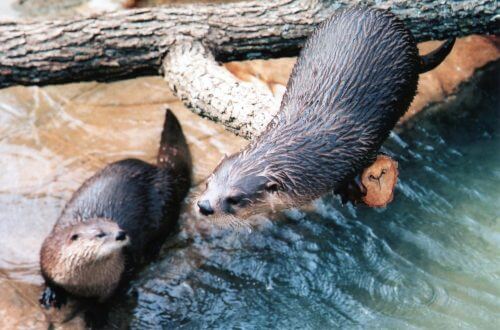engineers atMIT They created a fur-like rubber surface that mimics the insulation capabilities of otter fur, as a basis for developing a biomimetic diving suit / by: Yael Helfman Cohen

Engineers at MIT visited a company that manufactures surfing suits, and were exposed to the need for materials that would allow surfers to maintain their body heat while surfing, without impairing their agility or hindering their movement. Surfing is a sport that excels in constant movement between air and water. A warm and dry surfing suit is the "wet" dream of many surfers (apart from riding the perfect wave), but the materials available today do not provide a sufficient solution for keeping warm and dry, while maintaining ease of movement.
The researchers began to study small and agile animals that live in arctic environments and spend part of their time underwater and part of their time on land. Beavers and otters, for example, do not have a thick layer of fat for insulation (like whales), and they still maintain their body heat and even dryness while diving, by trapping air bubbles in their dense fur. In the past we have already written about Storm jacket which was developed inspired by the otter, and the current research deepens the understanding of the variables in the fur of the organisms related to the insulation abilities in general, and the air trapping abilities in particular.
For the purpose of the study, the researchers created fur-like surfaces in different dimensions, with the help of rubber castings. These surfaces sink at varying speeds in liquids of varying viscosity. With the help of video simulation, the researchers were able to estimate the amount of air trapped in each investment.
It was found that the space between hairs on the surface and the speed of its investment, play a significant role in determining the amount of air trapped in the surface. Based on these findings, the team developed a simple mathematical model to describe the air trapping effect in fur. Using the model it is possible to control the length of hairs, the intervals between them and the arrangement of hairs, and to plan textures for different diving speeds and to maximize the dry areas.
This model can be applied in production processes of various materials, such as, for example, fabrics for diving suits. Today's diving suits are made of hard rubber, but it may be possible to replace it with a lighter material, with a hair texture, so that the air will be used for insulation instead of the rubber, and the whole suit will be light and effectively insulated, it will keep the body warm in the cold water and allow the suit to dry quickly outside the water, that is, it will give the surfer The benefits of otter fur.

2 תגובות
Also in the video: an otter, and not a beaver
In the picture: otters, not beavers